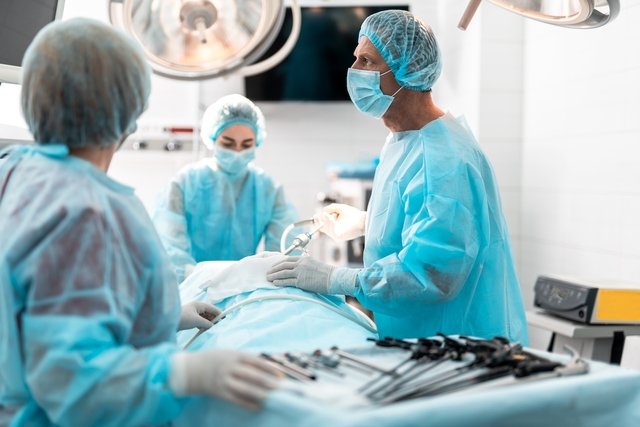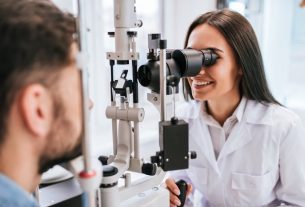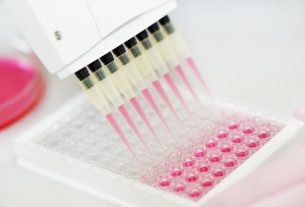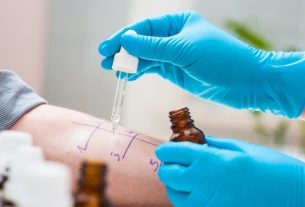Videolaparoscopy is a medical procedure that allows the doctor to visualize the structures present in the abdominal and pelvic region, and is recommended for the diagnosis or surgical treatment of health conditions, such as appendicitis, abdominal tumor, inguinal hernia or prostate cancer, for example.
This technique is performed by the surgeon under general anesthesia, and in women, videolaparoscopy, also called gynecological videolaparoscopy, is performed mainly for the diagnosis and treatment of endometriosis, fibroids, tubal ligation or ectopic pregnancy, or to investigate the cause of infertility, for example.
Videolaparoscopy is a minimally invasive procedure, which allows for faster recovery than conventional surgery, and can be done free of charge by the SUS, in hospitals that have the equipment for the procedure, or in private clinics or hospitals, as long as you have a medical indication. .

What is videolaparoscopy for?
Videolaparoscopy can be used both as a diagnostic method and as a treatment option.
When used for diagnostic purposes, videolaparoscopy (VL), also called diagnostic VL, can be useful in investigating and confirming:
- Gallbladder and appendix problems;
- Endometriosis;
- Peritoneal disease;
- Tumor abdominal;
- Gynecological diseases;
- Adhesive syndrome;
- Chronic abdominal pain with no apparent cause;
- Ectopic pregnancy;
- Malformations in the female reproductive system;
- Obstruction of the uterine tubes.
When indicated for therapeutic purposes, it is called surgical VL, and can be indicated for:
- Removal of the gallbladder;
- Appendicitis;
- Inguinal hernia correction;
- Correction of gastroesophageal reflux;
- Stomach reduction;
- Hydrosalpingitis;
- Ovarian lesions or ovarian cysts;
- Endometriosis;
- Endometrioma;
- Ectopic pregnancy;
- Removal of adhesions;
- Tubal ligation;
- Histerectomia total;
- Fibroids;
- Genital dystopias;
- Prostate cancer;
- Bladder removal;
- Removal of the kidney, totally or partially.
Furthermore, videolaparoscopy may be indicated to perform an ovarian biopsy, which is an examination in which the integrity of the uterine tissue is microscopically assessed. Understand what a biopsy is and how it is performed.
Videolaparoscopy for endometriosis
Videolaparoscopy for endometriosis can be done for both diagnosis and treatment, allowing the doctor to remove adhesions in the tubes, ovaries, intestine, bladder and other parts of the pelvis.
However, this is not the first test carried out, as it is possible to reach the diagnosis through other tests, such as transvaginal ultrasound and magnetic resonance imaging, for example, which are less invasive. See the main tests for endometriosis.
How videolaparoscopy is performed
Videolaparoscopy is a simple procedure, but it must be carried out under general anesthesia and consists of making a small cut in the region close to the navel through which a small tube containing a microcamera inside must enter.
In addition to this cut, other small cuts are normally made in the abdominal region through which other instruments pass to explore the pelvic and abdominal region or to perform surgery. The microcamera is used to monitor and evaluate the entire interior of the abdominal region, making it possible to identify the change and promote its removal.
How to prepare for videolaparoscopy
Some precautions are important to prepare for videolaparoscopy, such as:
- Take previous examssuch as preoperative procedures and surgical risk assessment, indicated by the doctor;
- Clarify all doubts with the surgeon about videolaparoscopy and recovery;
- Eat light meals and drink plenty of water the day before laparoscopy;
- Use the laxative recommended by your doctorthe day before the procedure;
- Fast for at least 8 hours before laparoscopy;
- Take the antibiotic prescribed by your doctor, to prevent infections;
- Inform your doctor about the use of anticoagulant medicationssuch as warfarin, heparin, rivaroxaban or acetylsalicylic acid, as the doctor may recommend stopping the use of these medications a few days before laparoscopy, to reduce the risk of bleeding;
- Report all medications, vitamins and nutritional supplements that you take frequently, as some can affect recovery, interfere with anesthesia or increase the risk of clot formation or bleeding;
- Tell your doctor if you are allergic to anesthetics or any other type of medicine;
- Take your usual medicines normally, with little wateras per medical advice;
- Avoid taking medications that have not been prescribed by your doctorincluding home remedies and teas.
Furthermore, on the day of the videolaparoscopy it is important to take all previously carried out exams, such as blood tests, X-rays, ultrasounds, computed tomography or magnetic resonance imaging, for example.
Types of videolaparoscopy
There are two types of videolaparoscopy, which include:
- Diagnostic videolaparoscopy or exploratory videolaparoscopy: this type is made to help diagnose health conditions, as it allows the doctor to visualize the abdominal and pelvic organs, and is generally indicated when other tests, such as ultrasound, magnetic resonance imaging or computed tomography, were not sufficient to make a diagnosis, or to identify the cause of a certain symptom or change in imaging tests;
- Surgical videolaparoscopy: This type is done for the surgical treatment of health conditions that have already been diagnosed. In some cases, during diagnostic videolaparoscopy, the doctor can already surgically treat the health problem.
The type of videolaparoscopy must be indicated by the doctor, after assessing the health status and test results.
What is recovery like?
Recovery from laparoscopy surgery is much better than conventional surgery, as there are fewer cuts and bleeding during surgery is minimal. Recovery time from videolaparoscopy surgery lasts from 7 to 14 days, depending on the procedure. After this period, the person can gradually return to daily activities according to medical recommendations.
Immediately after laparoscopy, it is normal to feel pain in the abdomen, pain in the shoulders, constipation, bloating, nausea or the urge to vomit. Therefore, during the recovery period, you should rest as much as possible and avoid having sex, driving, cleaning the house, shopping and exercising for the first 15 days.
When it should not be done
Videolaparoscopy should not be performed in case of advanced pregnancy, in people with morbid obesity or when the person is seriously weakened.
Furthermore, it is not indicated in cases of tuberculosis in the peritoneum, cancer in the abdominal region, large abdominal mass, intestinal obstruction, peritonitis, abdominal hernia or when it is not possible to apply general anesthesia.
Possible complications
Although this exam is the best way to complete the diagnosis of some diseases and have a better recovery, when used as a form of treatment, as well as other surgical procedures, videolaparoscopy presents some health risks, such as hemorrhage in important organs such as the liver or spleen. , perforation of the intestine, bladder or uterus, hernia at the site where the instruments enter, infection of the site and worsening of endometriosis, for example.
Furthermore, when performed on the chest, pneumothorax, embolism or emphysema may occur. Therefore, videolaparoscopy is not normally requested as the first option for diagnosing diseases, but is more often used as a form of treatment.

Sign up for our newsletter and stay up to date with exclusive news
that can transform your routine!
Warning: Undefined array key "title" in /home/storelat/public_html/wp-content/plugins/link-whisper-premium/templates/frontend/related-posts.php on line 12
Warning: Undefined array key "title_tag" in /home/storelat/public_html/wp-content/plugins/link-whisper-premium/templates/frontend/related-posts.php on line 13



